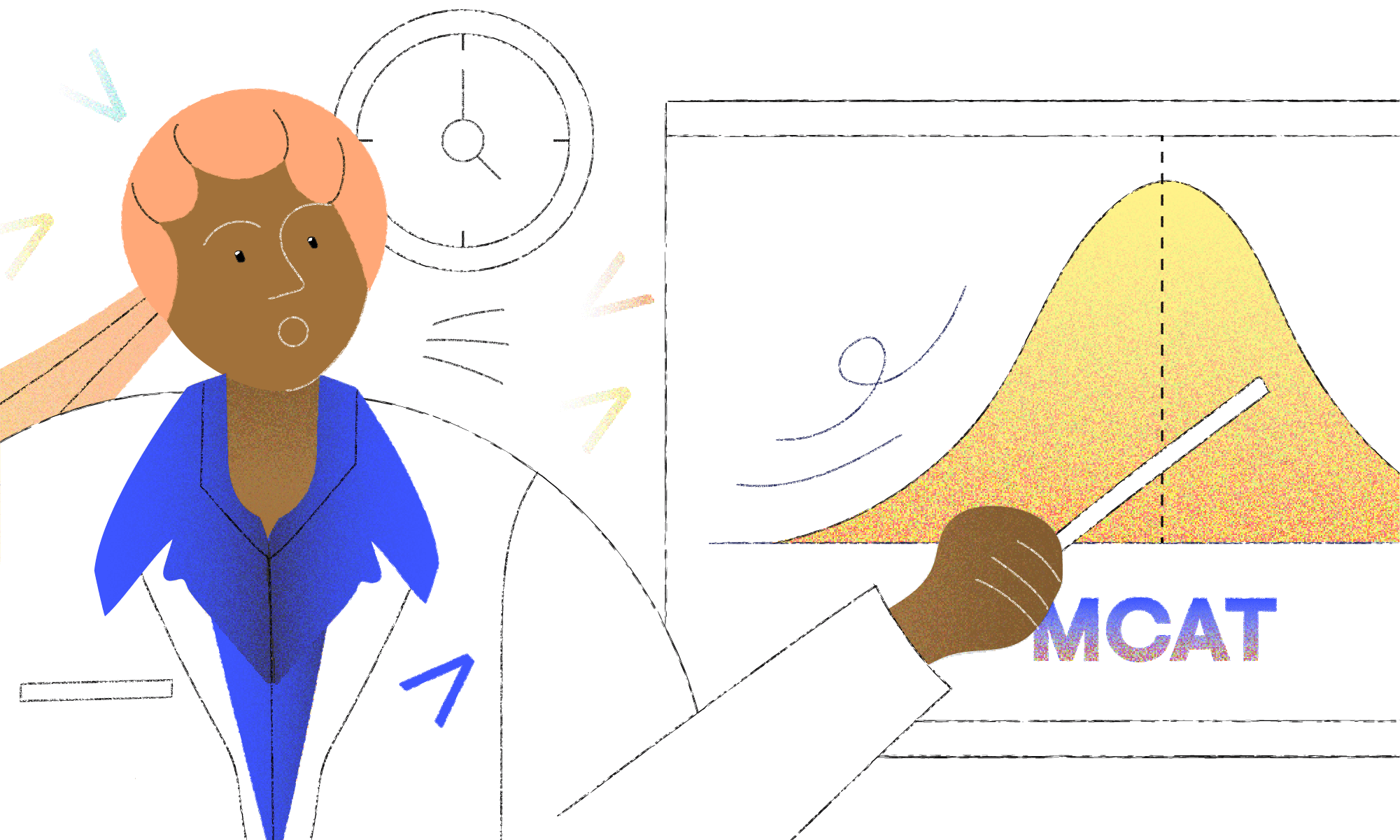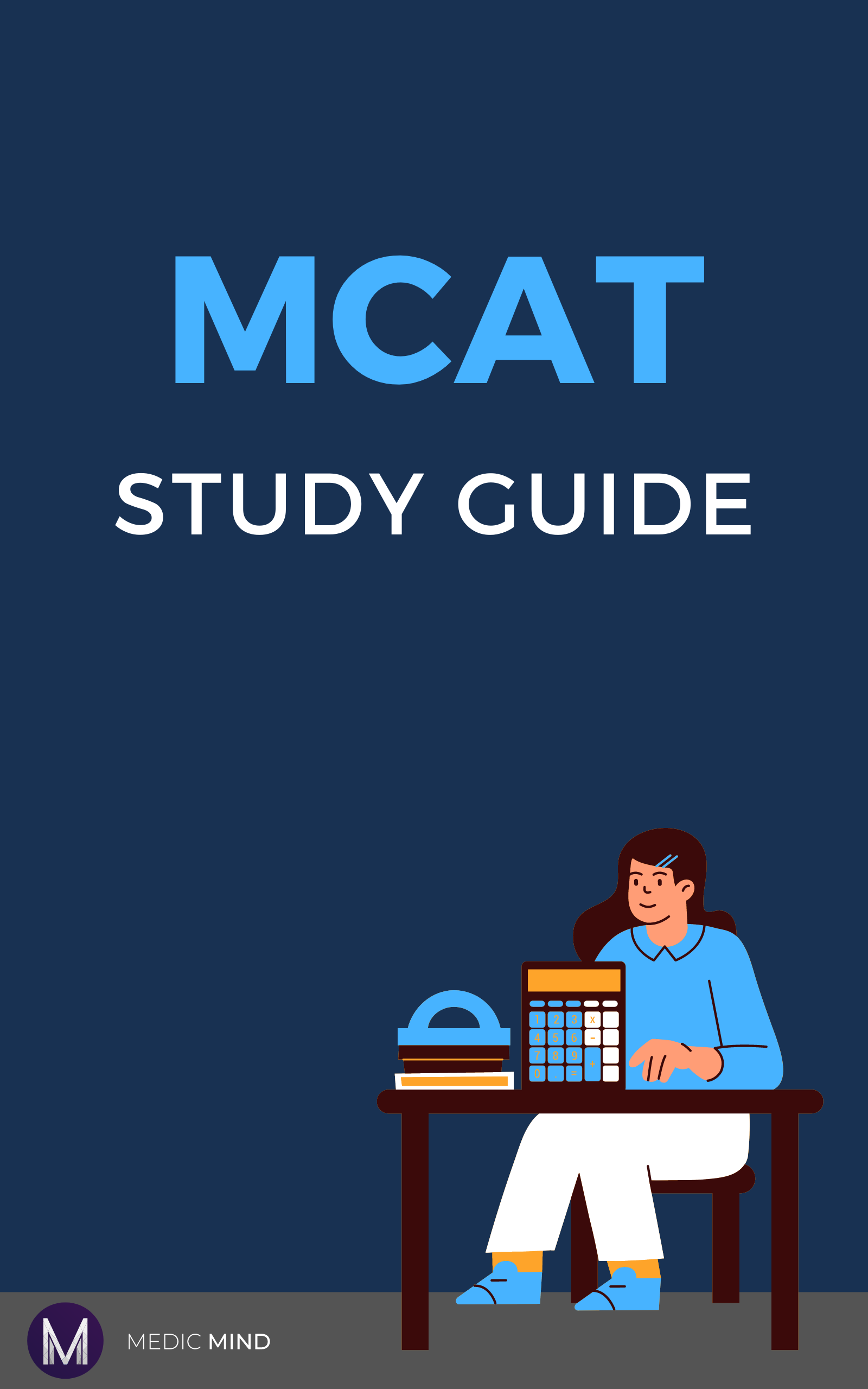
MCAT Psychology Practice Questions
Ready to ace the MCAT psychology section? Dive into our MCAT Psychology Practice Questions to sharpen your skills and boost your score. Mastering the MCAT requires more than textbook knowledge—it’s about understanding how to tackle the exam’s unique challenges.
These practice questions are designed to sharpen your skills in psychology, a critical component of the MCAT. With concise explanations and real-world examples, you’ll be equipped to conquer the psychology section and boost your overall score.
What is MCAT Psychology?
MCAT psychology explores how people think and behave. It’s a big part of the exam, making up 65% of the Psych/Soc section. This part tests your understanding of various factors influencing human behavior, like consciousness, cognition, and personality.
To do well, focus on understanding concepts instead of just memorizing facts. You’ll encounter questions based on passages, so it’s important to think critically and apply what you know.
Mastering MCAT psychology boosts your score and prepares you for the challenges you’ll face in medical school and beyond.
Topics Covered in MCAT Psychology
MCAT psychology covers a range of important topics essential for understanding human behavior and cognition. These include:
- Behavior and Social Processes: Understanding how individuals interact with their environment and society.
- Consciousness and Cognition: Exploring processes such as perception, attention, and memory.
- Emotion and Motivation: Examining the factors influencing emotions and drives.
- Language Development: Studying how language skills develop in individuals.
- Memory and Learning: Understanding the mechanisms behind memory formation and learning processes.
- Neurobiology: Exploring the biological basis of behavior and cognition.
- Perception and Sensation: Investigating how individuals perceive and interpret sensory information.
- Personality and Identity: Examining individual differences in behavior and personality traits.
- Psychological Disorders: Understanding various mental health conditions and their impact on behavior.
Mastering these topics is crucial for success on the MCAT and for developing a deep understanding of human psychology.
15 MCAT Psychology Practice Questions
Here are some sample MCAT psychology practice questions to help you prepare effectively:
1. All of the symptoms listed below would be brought on by a demyelinating illness, such as multiple sclerosis, EXCEPT:
A. a spectacular deficit
B. a saltatory conduction increase
C. slower signal transmission along the axon
D. lessening of the central nervous system’s white matter
Answer: B. a saltatory conduction increase
Explanation: In demyelinating illnesses like multiple sclerosis, the myelin sheath surrounding nerve fibers is damaged. This damage typically leads to slower signal transmission along the axon (choice C), lessening of the central nervous system’s white matter (choice D), and various symptoms including sensory, motor, and cognitive deficits. However, a saltatory conduction increase (choice B) is not a symptom of demyelinating illnesses; instead, these diseases disrupt saltatory conduction, leading to slower nerve impulses.
2. Which part of the brain is in charge of coordinating sophisticated motor actions?
A. the frontal lobe
B. the cerebellum
C. the occipital lobe
D. the reticular activating system
Answer: B. the cerebellum
Explanation: The cerebellum, located at the back of the brain, is primarily responsible for coordinating sophisticated motor actions, maintaining balance, and fine-tuning movements.
3. What part of the middle ear produces vibrations that correspond to the sound waves hitting it?
A. Cochlea
B. Malleus
C. basilar membrane
D. tympanic membrane
Answer: B. Malleus
Explanation: The malleus, one of the three tiny bones in the middle ear (ossicles), receives vibrations from the tympanic membrane (eardrum) and transmits them to the incus and then the stapes. These vibrations correspond to the sound waves hitting the eardrum.
4. What type of cell makes up the optic nerve, a bundle of fibers in the human visual pathway?
A. fovea cells
B. photoreceptors
C. bipolar cells
D. ganglion cells
Answer: D. ganglion cells
Explanation: Ganglion cells make up the optic nerve, which carries visual information from the retina to the brain. Photoreceptors (rods and cones) detect light, bipolar cells transmit signals from photoreceptors to ganglion cells, and ganglion cells send signals to the brain.
5. In the image above, two shapes—a circle and a rectangle—are perceived by humans, not a succession of lines. What explains this phenomenon the best?
A. Weber’s Law
B. Parallel processing
C. Gestalt psychology
D. Bottom-up processing
Answer: C. Gestalt psychology
Explanation: Gestalt psychology focuses on how people perceive and interpret sensory information as meaningful wholes. The phenomenon described in the question, where individuals perceive two shapes (circle and rectangle) rather than a series of lines, illustrates the Gestalt principle of closure, which states that individuals tend to perceive incomplete objects as complete.
6. A student is doing voluntary work in the stroke center of a hospital. When asked what he thinks the prevalence of stroke is among those over 65, the student responds that it’s probably around 40%, despite data analysis suggesting that it’s far lower. What causes this mistake?
A. base rate fallacy
B. confirmation bias
C. deductive reasoning
D. representativeness heuristic
Answer: D. representativeness heuristic
Explanation: The representativeness heuristic involves making judgments based on how closely a situation resembles a prototype or stereotype. In this case, the student’s estimate of stroke prevalence is influenced by the representativeness of the stroke center population to the stereotype of older individuals being at high risk of stroke.
7. Which of the following statements about bipolar disorders is true?
I. If any, their genetic inheritance is minimal.
II. They are linked to higher serotonin levels in the brain.
III. A diagnosis of any of them requires at least one depressed episode.
A. I only
B. II only
C. I and III
D. II and III
Answer: A. I only
Explanation: Bipolar disorders have a significant genetic component (statement I is true). They are not consistently linked to higher serotonin levels, and a diagnosis of bipolar disorder does not necessarily require a depressed episode (statements II and III are false).
8. What does the James-Lange Theory of Emotion propose?
A. Physical responses are influenced by emotions.
B. Emotional changes are influenced by physiology.
C. Emotional changes are unaffected by physiological changes.
D. A person’s beliefs regarding how their physiology affects their emotions
Answer: B. Emotional changes are influenced by physiology.
Explanation: The James-Lange Theory of Emotion proposes that physiological responses precede and influence emotional experiences. In other words, people experience emotions as a result of physiological changes triggered by external stimuli.
9. What stage of life is it that identity formation is most intensive, according to Erik Erikson?
A. earliest years
B. adolescence
C. from birth to two years
D. youthful adulthood
Answer: B. adolescence
Explanation: According to Erik Erikson, the stage of adolescence is characterized by the primary conflict of identity versus role confusion, during which individuals explore and develop a sense of self and personal identity.
10. What is the earliest stage of cognitive development, according to Piaget?
A. sensorimotor
B. preoperational
C. concrete operational
D. formal operational
Answer: A. sensorimotor
Explanation: According to Piaget’s theory of cognitive development, the sensorimotor stage (from birth to about 2 years old) is the earliest stage, during which infants learn about the world through sensory experiences and motor actions.
11. These practice questions will help you assess your understanding and readiness for the MCAT psychology section.
What term describes the tendency to rely on mental shortcuts or “rules of thumb” when making decisions, often leading to errors in judgment?
A. Confirmation bias
B. Availability heuristic
C. Anchoring effect
D. Overconfidence bias
Answer: B. Availability heuristic
Explanation: The availability heuristic refers to the tendency to rely on readily available information when making decisions or judgments. This often leads to errors because easily recalled information may not be representative of the true probability or prevalence of events.
12. According to Erik Erikson’s theory of psychosocial development, what is the primary conflict during the stage of adolescence?
A. Trust vs. mistrust
B. Autonomy vs. shame and doubt
C. Initiative vs. guilt
D. Identity vs. role confusion
Answer: D. Identity vs. role confusion
Explanation: According to Erik Erikson’s theory, the primary conflict during adolescence is identity versus role confusion. This stage is marked by the exploration of personal values, beliefs, and identity.
13. Which of the following neurotransmitters is primarily associated with the regulation of mood, sleep, and appetite?
A. Serotonin
B. Dopamine
C. Acetylcholine
D. GABA
Answer: A. Serotonin
Explanation: Serotonin is primarily associated with the regulation of mood, sleep, appetite, and other emotional processes. Imbalances in serotonin levels are implicated in mood disorders such as depression and anxiety.
14. What is the term for the process of learning through the observation of others’ behavior and the consequences of that behavior?
A. Classical conditioning
B. Operant conditioning
C. Social learning
D. Extinction
Answer: C. Social learning
Explanation: Social learning, also known as observational learning or modeling, involves learning through the observation of others’ behavior and the consequences of that behavior. It was emphasized by psychologist Albert Bandura.
15. According to Maslow’s hierarchy of needs, which of the following needs must be satisfied before an individual can fulfill higher-level needs such as self-esteem and self-actualization?
A. Physiological needs
B. Safety needs
C. Love and belongingness needs
D. Esteem needs
Answer: A. Physiological needs
Explanation: Maslow’s hierarchy of needs proposes that physiological needs, such as food, water, shelter, and sleep, must be satisfied before individuals can fulfill higher-level needs such as safety, love and belongingness, esteem, and self-actualization. This hierarchy suggests that basic physiological needs form the foundation upon which higher-level needs are built.
Conclusion
Mastering MCAT psychology is essential for achieving a high score on the exam. By practicing with sample questions and understanding key concepts, you can boost your confidence and readiness for test day.
Remember, consistent practice and solid understanding are key to success. If you’re looking for personalized guidance and support, consider working with Medic Mind’s MCAT tutors. With their expertise and tailored approach, you’ll be well-equipped to tackle the psychology section and excel on the MCAT. Take the next step towards your medical school journey with our dedicated tutors today!
FAQs
What’s the best way to approach studying for the MCAT psychology section?
The best approach to studying for the MCAT psychology section involves a combination of content review, practice questions, and simulated exams. Start by thoroughly reviewing key psychological concepts outlined in the AAMC content guidelines. Then, reinforce your understanding by answering practice questions to identify areas of weakness.
Additionally, simulate test conditions by taking timed practice exams to build endurance and familiarize yourself with the exam format. Finally, regularly assess your progress and adjust your study plan accordingly to ensure comprehensive preparation.
How can I improve my critical thinking skills for MCAT psychology questions?
Improving critical thinking skills for MCAT psychology questions requires practice and exposure to a variety of question types. Focus on understanding the underlying principles behind psychological concepts rather than rote memorization. Practice analyzing passages and identifying key information, hypotheses, and conclusions.
Additionally, engage in active reading and regularly evaluate arguments presented in practice questions to develop your ability to think critically and apply psychological principles to real-world scenarios.
Is it necessary to memorize specific psychological studies for the MCAT?
While memorizing specific psychological studies can be helpful, it’s not essential for success on the MCAT. Instead, focus on understanding the key findings, methodologies, and implications of well-known studies in psychology. Additionally, familiarize yourself with common research methods and statistical concepts used in psychological research.
How can I effectively manage my time during the MCAT psychology section?
Effective time management during the MCAT psychology section involves strategic planning and pacing. Begin by allocating specific time intervals for each passage and set a target time for completing individual questions. Prioritize passages based on difficulty and your level of familiarity with the content.
Additionally, practice time-saving strategies such as skimming passages for key information and flagging challenging questions to revisit later. Regularly monitor your progress during practice exams to refine your time management skills and optimize performance on test day.
Are there any specific test-taking strategies for MCAT psychology questions?
Yes, several test-taking strategies can enhance your performance on MCAT psychology questions. First, carefully read each question stem and passage to identify key information and eliminate irrelevant details. Utilize the process of elimination to narrow down answer choices and increase your chances of selecting the correct option. Additionally, pay attention to keyword cues and context clues within questions to infer the correct response.






Was this article helpful?
Still got a question? Leave a comment